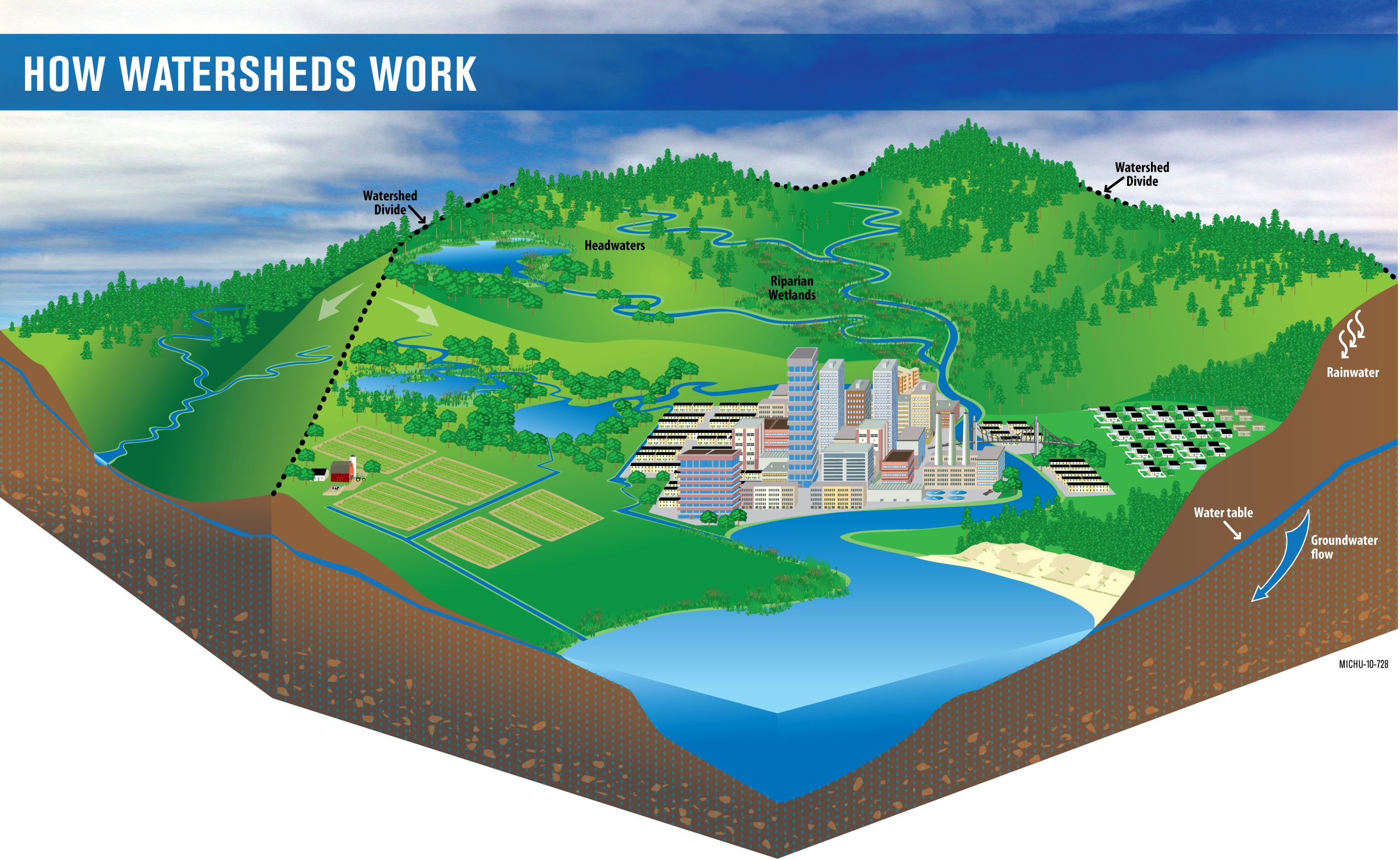Exploring Watersheds NGSS SummaryExploring Watersheds
This lesson and activity focus on watersheds and how they operate. A watershed is an area of land that drains into a river system. As the water moves downward, it forms streams and rivers. The channeling and pooling of water is determined by the shape or topography of the land. Water continues to move downward, and rivers may join with lakes or other rivers as they head toward the ocean.
Grade Level: 4-8 grades
Performance Expectations:
- MS-ESS2-1 Earth’s Systems: Develop a model to describe the cycling of Earth’s materials and the flow of energy that drives this process.
- MS-ESS2-2 Earth’s Systems: Construct an explanation based on evidence for how geoscience processes have changed Earth’s surface at varying time and spatial scales.
For alignment, see: Exploring Watersheds NGSS Summary
Lesson Objectives
- Describe the characteristics of a watershed and explain how water flows through a watershed.
- Demonstrate scientific concepts using a model.
- Share ideas about science through purposeful conversation in collaborative groups.
- Evaluate data, claims and personal knowledge through collaborative science discourse.
- Communicate and defend findings of observations using evidence.
Background
All life depends on water, but clean water is about more than just survival — exceptional lakes and streams are part of what makes Michigan special. No point in Michigan is more than six miles from an inland lake or stream, or more than 85 miles from one of the Great Lakes. Michigan’s abundant freshwater supports a vibrant recreation and tourism industry, supplies clean water for agriculture and manufacturing, and enhances the quality of life for all residents. Where does that water come from? Why, our watersheds, of course!
The land that catches rain or snow and funnels the water towards a single river is known as the watershed of that river. A watershed can also be called a river basin, catchment or drainage basin. Watershed boundaries — or drainage divides — are high points in the landscape. Rainwater that lands within a river’s watershed will flow down toward that river; rainwater that lands outside a river’s watershed will flow to a different river.

For more information on watersheds in Michigan, see: An Introduction to Michigan Watersheds: A Guide for Teachers, Students and Residents.
Activity
- DIY Watershed
Summary: Students collaboratively build models of watersheds by placing a large piece of butcher paper over various sized objects in a large pan. As students spray their model watersheds with water, they observe and mark on their map the movement and pooling representing rivers, lakes and ponds.
Time: Two 50-minute class periods (100 minutes)

